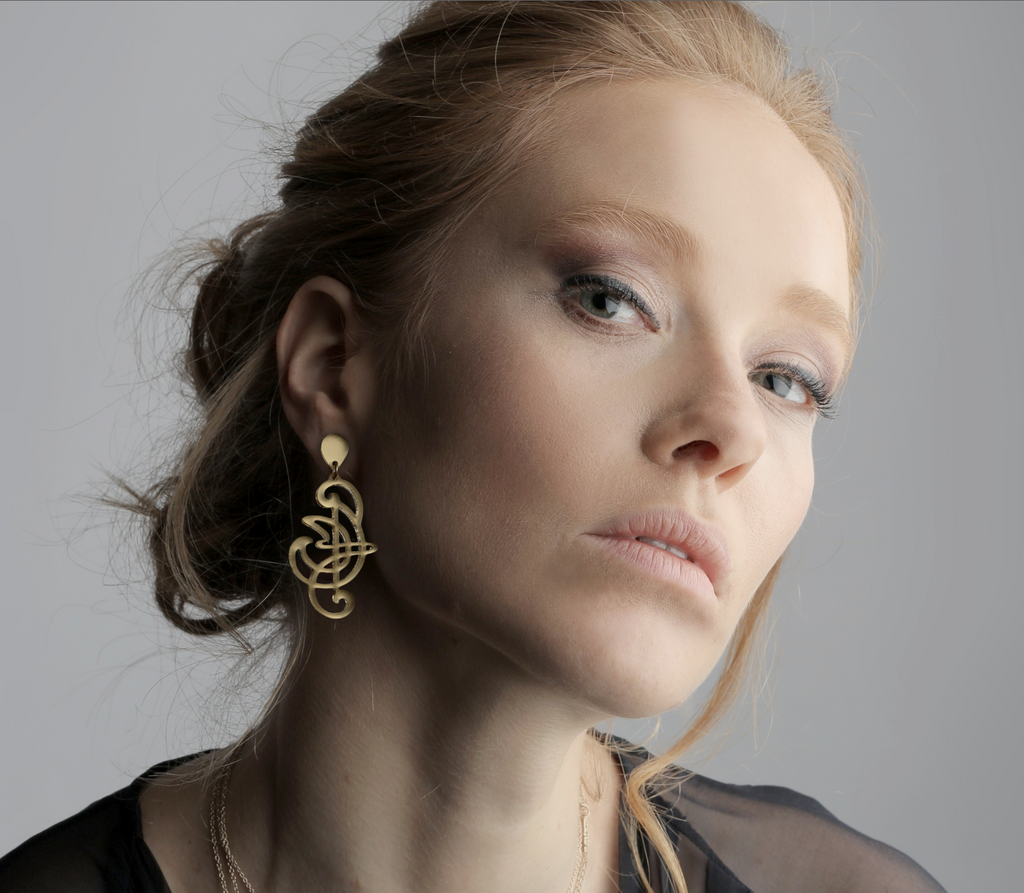In 1878, Alphonse Mucha's application to the Academy of Fine Arts in Prague was rejected.
He was advised to “find a different career”. Now he’s one of Art Nouveau’s most celebrated artists.

The North Carolina Museum of Art just opened ‘Alphonse Mucha: Art Nouveau Visionary,’ and I'm honored to have designed jewelry in partnership with the museum and the Mucha Foundation.


These limited edition pieces can only be found at the exhibit's gift shop.
As a teenager, Alphonse Mucha was my favorite artist.
When I visited Prague for the first time in 1995, finding Mucha’s work wasn’t easy. But by chance, in a small Czech village (Moravský Krumlov), I came across The Slav Epic—a 20-part series depicting the history of the Slavic people.
The paintings were housed in an unassuming building nestled in the woods. To enter, you were required to wear very large, rather unattractive, slippers over your shoes.
But if I thought those slippers were big, I had no idea what was coming…

Shuffling along in my slippered shoes, I witnessed the most monumental paintings I've ever seen, up to 26 feet wide and 20 feet high.
I was moved by the haunting eyes of Mucha’s subjects and his deep Czech pride.
His devotion to this project, to his people, left an impression on me.

More recently, I visited the Mucha Museum in Prague. It houses a plethora of Mucha's iconic work—which is no longer hard to find!

Hearing about NCMA's 2021 exhibit, I really wanted to design something special to celebrate the artist.
But Mucha’s work is so ornate, so rich with detail—how could my modern aesthetic possibly crossover?

Mucha's own jewelry designs.
Then I stumbled across 'Combinaisons Ornementales,’ a pattern book from 1901, featuring the Art Nouveau motifs of Mucha and two of his contemporaries. These forms, painted on plain backgrounds were meant to be copied and augmented—I'm assuming to create commercial designs for textiles, wallpaper, etc. The designers of the time were likely thrilled to uncover this gem inspiration. I know I was.
I had finally discovered a way to bridge Mucha's embellished style with a simpler aesthetic.



This pattern book helped me accomplish another goal: to incorporate Mucha’s own art, his actual hand, into the jewelry designs. Rather than being "inspired by Art Nouveau," I wanted these designs to reflect the artist, allowing exhibit goers take a little piece of Mucha home with them.
